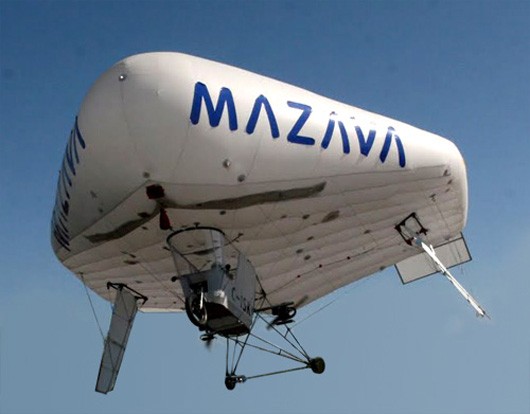In recent times there’s been a resurgence of interest in airships for military and commercial uses as evidenced by Lockheed Martin’s High Altitude Long Endurance-Demonstrator (HALE-D) and Hybrid Air Vehicles heavy-lift variant of Northrop Grumman’s Long-Endurance Multi-Intelligence Vehicle (LEMV). Like HAV’s design, this concept from Canadian company Solar Ship is a hybrid airship that relies on aerodynamics to help provide lift, and like the HALE-D, it would have its top surface area covered in solar cells to provide energy and minimize its carbon footprint.

Although the Solar Ship aircraft would be filled with helium, under normal circumstances they would rely on the aerodynamic lift provided by their wing shape to provide more than half the lift required to get them off the ground. Additionally, the aircraft could also fly when filled with plain old air. This means the aircraft will still be able to fly – and, more importantly, land safely – if there is damage that results in helium loss.
Solar Ship says the aircraft’s electric motor can either be powered solely by the energy provided by the on board batteries, or by the solar panels covering the wing – a feat already achieved by a conventional airplane design in the form of Solar Impulse.

The company points out that such heavier-than-air airships provide numerous advantages over their lighter-than-air brethren. Firstly, no mooring infrastructure or ballast weight is required to keep the aircraft from floating away during loading or unloading, making them more practical for the remote locations in which they are designed to operate. Additionally, not relying on buoyancy for lift means the aircraft can be smaller than lighter-than-air aircraft carrying the same payload. They are also more structurally robust and more maneuverable and resistant to wind and weather conditions.
Small, medium, large
Solar Ship has designed three different concept aircraft, the smallest of which is the Caracal. This design has a claimed payload capacity of up to 750 kg (1,653 lb) for 2,500 km (1,553 miles) with a maximum speed of 120 km/h (75 mph).
Designed for remote areas where roads are a rarity and targeted at general, utility and ISR (Intelligence, Surveillance and Reconnaissance) markets, the Caracal can take off and land on strips as short as 50 m (164 ft) long but carrying the maximum payload requires strips of 100 m (328 ft).
Next step up in size is the mid-size Chui, which is targeted at ISR and cargo markets. Under solar power it can carry up to 2,500 kg (5,512 lb) over distances of up to 5,000 km (3,107 miles) at speeds of up to 100 km/h (62 mph). The take off and landing distances of the Chui are the same as the Caracal – 50 m (164 ft) empty and 100 m (328 ft) when fully loaded.

The third and largest Solar Ship class is the Nanuq, a dedicated cargo freighter designed to carry payloads of up to 30 tonnes (66,139 lb) for distances of up to 6,000 km (3,728 miles) at speeds of up to 120 km/h (75 mph). Empty the Nanuq can take off on strips 60 m (197 ft) long and land on strips 100 m (328 ft) long, while fully loaded requires a take off distance of 200 m (656 ft).
Solar Ship has already built and flown a 10 m (33 ft) prototype. The promotional video below provides a glimpse of the company’s vision for the future in which it sees a wide range of uses for its heavier-than-air aircraft, from delivery of urgent medical supplies to remote communities and disaster relief, to environmental monitoring and military applications.
… and with several company’s floating short take off hybrid airship platforms, this is definitely a space to watch over the next decade.

